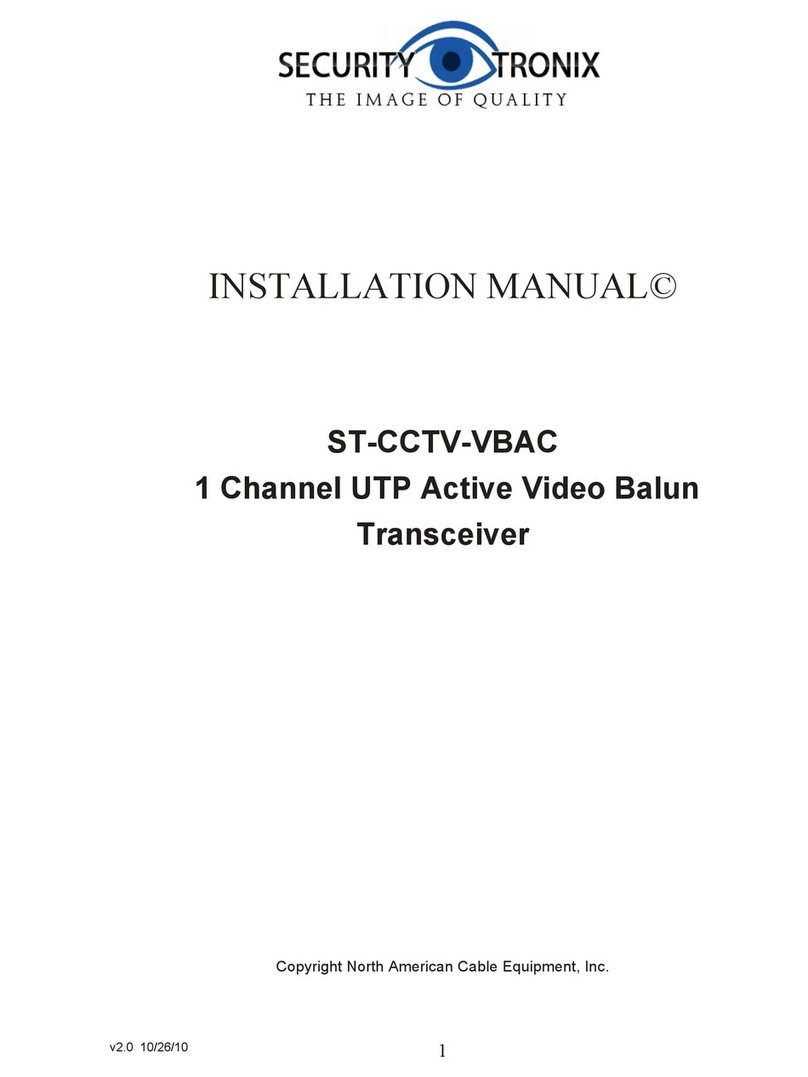sharpness. Refer to the reference guide below to set the sharpness control’s DIP
switches per cable distance.
Active receiver sharpness chart (suggested for best color video transmit distance)
5. TROUBLESHOOTING
a. Make sure all component, data and UTP cable connections are tight and not loose.
b. Ensure the UTP wire connections on the transmitter and receiver are using the same
pins and the data wires the correct polarities.
c. The quality of UTP cables has a major effect on the usable distance of transmission
lines and the quality of the displayed signal. Therefore, the actual transmission length
is subject to the quality of the UTP cables being used. Professional grade
transmission lines should be used.
d. If your device is not displaying a video signal check to be sure the transmitter and
receiver each have power. Then check all wire connections for tight fit and correct
polarity.
e. If interference appears on the image check all system connections including camera,
housing, monitor, DVR, etc. as well as ensuring all devices are property grounded.
f. If the image appears twisted or wobbly make sure the wire connections on the
transmitter and receiver have the same polarities. Also check the UTP cable
connections to the RJ45 connectors are in the correct order.
g. If the image is too bright the received signal may be too strong and require adjustment
using the ST-CCTV-VBACR-POE’s Brightness Control and Sharpness Control. It may
also be necessary to adjust the ST-CCTV-VBAT-POE’s gain control.
h. If the remote CCTV camera cannot be powered by the ST-CCTV-VBACT-POE
transmitter (i) check the power to the remote camera and determine what the voltage
level is at the camera, (ii) check the input voltage to the ST-CCTV-VBACR-POE
receiver to see whether it is in the required range, (iii) recalculate the voltage drop
from the receiver to the camera for the length/gauge of UTP cable being used –the
voltage drop together with an “undersized” power supply will keep sufficient power
from arriving at the camera, (iv) make sure the wiring of the UTP cable to the RJ45
plugs is in the appropriate order, and/or (v) shut down the camera’s power, disconnect
power to the camera and reconnect/re-energize to make sure the
ST-CCTV-VBAC-POE is not in overload protection status.
i. If power is getting to the remote camera but PTZ controls are not functioning correctly
(i) make sure the 2-wire UTP data cables have tight connections at the remote
camera, transmitter, receiver and controller and (ii) ensure the polarities for the 2 UTP
data wires are consistent among the remote camera, transmitter, receiver and
controller connections.
























